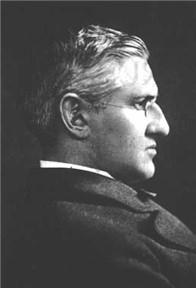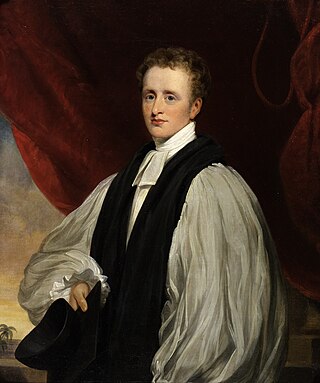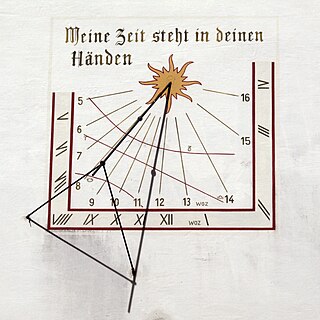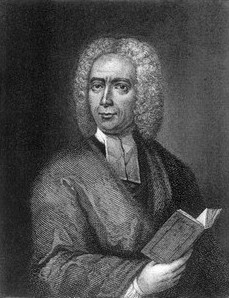Related Research Articles

Frances Jane van Alstyne, more commonly known as Fanny J. Crosby, was an American mission worker, poet, lyricist, and composer. She was a prolific hymnist, writing more than 8,000 hymns and gospel songs, with more than 100 million copies printed. She is also known for her teaching and her rescue mission work. By the end of the 19th century, she was a household name.

Frances Ridley Havergal was an English religious poet and hymnwriter. Take My Life and Let it Be and Thy Life for Me are two of her best known hymns. She also wrote hymn melodies, religious tracts, and works for children. She did not occupy, and did not claim for herself, a prominent place as a poet, but she carved out a niche for herself.

"It Is Well With My Soul", also known as "When Peace, Like A River", is a hymn penned by hymnist Horatio Spafford and composed by Philip Bliss. First published in Gospel Hymns No. 2 by Ira Sankey and Bliss (1876), it is possibly the most influential and enduring in the Bliss repertoire and is often taken as a choral model, appearing in hymnals of a wide variety of Christian fellowships.
Robert Lowry was an American preacher who became a popular writer of gospel music in the mid- to late-19th century. His best-known hymns include "Shall We Gather at the River", "Christ Arose!", "How Can I Keep from Singing?" and "Nothing But The Blood Of Jesus".

"Just as I Am" is a Christian hymn, written by Charlotte Elliott in 1835, first appearing in the Christian Remembrancer, of which Elliott became the editor in 1836. The final verse is taken from Elliott's Hours of Sorrow Cheered and Comforted (1836).

A Christian child's prayer is Christian prayer recited primarily by children that is typically short, rhyming, or has a memorable tune. It is usually said before bedtime, to give thanks for a meal, or as a nursery rhyme. Many of these prayers are either quotes from the Bible, or set traditional texts.

"Come Thou Fount of Every Blessing" is a Christian hymn written by the pastor and hymnodist Robert Robinson, who penned the words in the year 1758 at the age of 22.
"For the Beauty of the Earth" is a Christian hymn by Folliott S. Pierpoint (1835-1917).

"Holy, Holy, Holy! Lord God Almighty!" is a Christian hymn written by the Anglican bishop Reginald Heber (1783–1826).

William James Kirkpatrick was an Irish-born American hymnwriter. He partnered with John R. Sweney to produce and publish over 1,000 gospel hymn songs and over sixty hymnal books.

"Thine Be the Glory, Risen Conquering Son", also titled "Thine Is the Glory", is a Christian hymn for Easter, written by the Swiss Protestant minister, Edmond Budry (1854–1932), and set to the tune of the chorus "See, the Conqu'ring hero comes" from the third section of Handel's oratorio Judas Maccabaeus. The hymn is sometimes sung at weddings or funerals.
"Gwahoddiad" is a Welsh hymn of American origin.

"The Hymn of Joy" is a poem written by Henry van Dyke in 1907 in being a Vocal Version of the famous "Ode to Joy" melody of the final movement of Ludwig van Beethoven's final symphony, Symphony No. 9.

George Coles Stebbins (1846–1945) was a gospel song writer. Stebbins was born February 26, 1846, in Orleans County, New York, where he spent the first 23 years of his life on a farm. In 1869 he moved to Chicago, Illinois, which marked the beginning of his musical career.

Psalm 31 is the 31st psalm of the Book of Psalms, beginning in English in the King James Version: "In thee, O LORD, do I put my trust". In Latin, it is known as "In te Domine speravi". The Book of Psalms is part of the third section of the Hebrew Bible, and a book of the Christian Old Testament. In the slightly different numbering system used in the Greek Septuagint version of the Bible, and in its Latin translation, the Vulgate, this psalm is Psalm 30. The first verse in the Hebrew text indicates that it was composed by David.

"I am Thine, O Lord" is one of many hymns written by Fanny Crosby, a prolific American hymn writer. The melody was composed by William Howard Doane. The former was talking with the latter one night about the proximity of God and penned the words before retiring for the night. It has also been reported that Fanny Crosby, though blind, had a sunset described to her in words before writing the lyrics. Hebrews 10:22 is reported as being a source of inspiration for the hymn:

"Day by Day " is a Christian hymn written in 1865 by Lina Sandell several years after she had witnessed the tragic drowning death of her father. It is a hymn of assurance used in American congregational singing.

"Thine for ever! God of love" is an English confirmation hymn. It was written by Mary Fawler Maude in 1847. The original is in seven stanza of four lines. It is usually abbreviated, and stanzas two and three transposed, as in the S.P.C.K. Church Hymns, 1871; the Hymnal Companion; Hymns Ancient and Modern, 1875; Thring's Collection, 1882, and other hymnbooks. As a hymn for Confirmation its use in its day was extensive. The hymn was altered by various editors.

"Alas! and Did My Saviour Bleed" is a hymn by Isaac Watts, first published in 1707. The words describe the crucifixion of Jesus and reflect on an appropriate personal response to this event. The hymn is commonly sung with a refrain added in 1885 by Ralph E. Hudson; when this refrain is used, the hymn is sometimes known as "At the Cross". The final line of the first stanza has attracted some criticism, as it leads the singer to call themselves a "worm". Hymnals often change the line from "for such a worm as I" to "for such a one as I" or "for sinners such as I".
References
- Barrows, Cliff and Husted, Don. Crusader Hymns and Hymn Stories. Chicago, Illinois: Hope Publishing Co., 1967; pp. 90–92.
- Payne, Dillion. The Pioneer History of Davis County, Iowa. Bloomfield, Iowa: The Bloomfield Democrat, 1927; pp. 255–258.